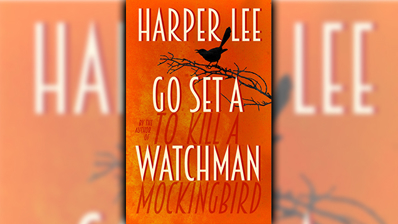Stephanie Jones: Book Review - Go Set A Watchman by Harper Lee
- Publish date
- Friday, 14 Aug 2015, 2:07PM

Go Set a Watchman was destined to be one of the most-read and most-reviewed novels of 2015 from the moment its publication was announced, and in the screeds already written about one of the most singular events in the history of book publishing, more questions than answers have emerged.
In a well-researched and unsettling piece on Harper Lee and her birthplace of Monroeville, Alabama, the inspiration for the fictional Maycomb County where Go Set a Watchman and its predecessor, To Kill a Mockingbird, are set,Bloomberg’s Claire Suddath asks, ‘What Does Harper Lee Want?’ and examines the possible motives for the publication of a manuscript that was apparently found in a safe deposit box belonging to Lee and her late sister, Alice, only last year.
Lee, now 89 and living in a Monroeville retirement home after years in New York City, has not given an interview since 1964, four years after the publication of her debut novel To Kill a Mockingbird made her one of the most venerated American writers of
the century. The story of six-year-old Jean Louise ‘Scout’ Finch, her brother Jem and their lawyer father Atticus is a staple of high-school English departments across the developed world, and has long been something of a curiosity for its status as a true standalone work, Lee having once said that she would never publish again.
Go Set a Watchman, then, couldn’t be more of a rarity, though it hasn’t been more than a half-century in the making. It is in fact an early draft of what became, under the guidance of a skilled editor, To Kill a Mockingbird, and Lee herself is reported as describing the ‘new’ book as a ‘parent’ to the first. Where Mockingbird is set in the 1930s and centres on Atticus Finch’s defence of a black man on trial for the rape of a white woman, Watchman is placed in the time Lee was writing it, the late 1950s, and has Jean Louise as a 26-year-old returning for a visit to Maycomb County from her new home in New York City.
The train trip between the northern and southern states was one Lee often made herself, and the opening pages are filled with the minutiae of travel: the sense of joy provoked by the receding sight of Georgia’s hills, the indignity of being rescued from a retractable bed by a porter. When Jean Louise arrives, it is not quite to the home we remember. Atticus, now 72, is plagued by rheumatoid arthritis and cared for by his sister, Alexandra, who plays the role of nemesis to Jean Louise.
Jem is dead, felled by a heart attack, and housekeeper and quasi-mother Calpurnia has retired. In addition to Alexandra and Atticus, their younger brother John Hale Finch (‘Uncle Jack’) and Jean Louise’s long-time boyfriend Henry Clinton play prominent roles in Watchman, which is less a fully realized novel than a series of scenes and conversations that elucidate Jean Louise’s struggle with the role of women and her family’s and community’s collective attitude to race and equality.
Watchman was written during the dawning of the American civil rights movement, but the text offers no indication that Alabamans had any intention of entertaining desegregation. The novel’s dramatic high points come in Jean Louise’s observation of what today would be deemed hate speech in a citizens’ council meeting at which her father is present, and in her consequent crisis of faith in Atticus and confrontations with her father and his brother. Lee is at her best in these conversations, which reveal Jean Louise to be as morally inflexible and judgemental as those she professes to abhor, but Watchman’s patchy narrative leaves it far from a finished product.
Much has been made by readers and critics of Watchman’s exposure of Atticus, hitherto a near-saintly figure in literature, as a bigot who freely uses the epithet ‘nigger’ and espouses anti-NAACP views. It is true that the vision offered of the Finch family jars with the one we’re accustomed to, but the earlier, halcyon picture was the product of a child’s eyes. The social, cultural and racial environment of the Deep South in the 1950s was volatile at best and horrifically violent at worst, and Lee doesn’t show anything close to the worst. The Atticus of Watchman is a more believable figure than the golden god of his daughter’s childhood.
In New York magazine, Christian Lorentzen wonders if Go Set a Watchman might have been better off lost. Perhaps, but we have it now, and my recommendation to any would-be reader, and especially devotees of To Kill a Mockingbird, is to approach it for what it is: a literary artefact and an incomplete, imperfect companion to a modern American classic.
Take your Radio, Podcasts and Music with you

